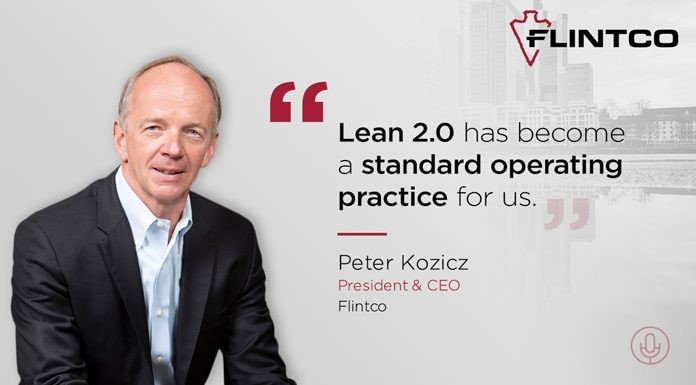
Lean, not to be confused with a lien, is a business practice designed to increase efficiency, eliminate wasteful applications, and utilize human effort to the best of its ability. Lean has been implemented across industries with great success…that is, until it encountered the construction industry.
Unperturbed by the challenges of bringing traditional efficient operations to the industry, Flintco soldiered on, implementing lean practices with great success. On this episode of Flintco Forward, we found out how the company did it and why it works with Melanie Gilbertson, lean manager, and Peter Kozicz, president & CEO of Flintco.
After speaking with other construction companies about lean, Kozicz noted that “they understand why it would work in the context of a manufacturing facility, but [they believed] there’s no way it will work on a construction site because there are too many things that are unpredictable.” The team at Flintco decided to challenge this notion.
Lean has never been more critical for the industry; labor shortages plague the construction industry, and labor productivity hindering its success.
“Labor productivity in the construction industry runs at about 40%,” Kozicz said. “Why not address labor productivity issues first?”
Today, Flintco has designed a construction industry-specific version of Lean–Lean 2.0. Gilbertson dove into the five principles that make Lean 2.0 successful in this unique marketplace. At the heart of Lean 2.0 is an ethos for teamwork and team satisfaction, something missing in the heavy contractor world of construction.
What’s more, Lean 2.0 acknowledges that each project is different, with different parameters and a different team on every site. This individualized approach with a dogmatic, can-do attitude is what sets Lean 2.0 apart from its predecessor.
“Complacency is not part of our culture,” Gilberston said.